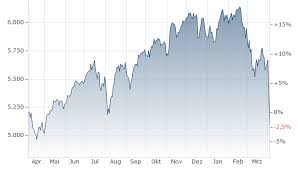The Significance of the S&P 500 Index in Today’s Market

Introduction
The S&P 500, or Standard & Poor’s 500, is a benchmark stock market index that ranks the 500 largest publicly traded companies in the United States. It is widely regarded as one of the best representations of the American economy and its equity market. Given its significant role in guiding investment strategies, understanding the S&P 500 is crucial for both seasoned and novice investors. As of October 2023, the index has shown noteworthy fluctuations, reflecting broader economic trends and investor sentiment.
Current Performance of the S&P 500
Recently, the S&P 500 has experienced a turbulent period, impacted by various macroeconomic factors including inflationary pressures, interest rate hikes, and geopolitical tensions. In the past quarter, the index has witnessed a volatility spike, driven by market reactions to inflation data and the Federal Reserve’s stance on monetary policy. In September 2023, the index briefly dipped below 4,200 points, a key psychological level, before recovering as investors reacted to positive earnings reports from major technology firms.
Key Contributors to the S&P 500
The index is composed of companies from various sectors, including technology, healthcare, finance, and consumer discretionary. Tech giants like Apple, Microsoft, and Alphabet play substantial roles in the index’s performance due to their large market capitalisations. As of now, these companies are contributing significantly to the S&P 500’s overall performance, often driving trends in both bullish and bearish markets. The market’s resilience has been showcased by these companies reporting robust quarterly results, thus tempering fears of a deeper economic downturn.
Impact on Investors
For investors, the S&P 500 serves not only as a vital tool for tracking market performance but also as a benchmark for portfolio allocation decisions. Many mutual funds and exchange-traded funds (ETFs) are designed to replicate its performance. Therefore, understanding its movements and underlying factors can provide critical insights for investment strategies. As the index continues to fluctuate, investors are encouraged to adopt a long-term perspective rather than react to short-term market volatility.
Conclusion
The S&P 500 remains a central player in the financial landscape, reflecting the health of the US economy and corporate performance. Its relevance is underscored by its ability to adapt to changing economic conditions. Investors looking at the index can use it as a barometer for economic trends, making informed decisions based on its performance. As we move forward, keeping an eye on developments within the S&P 500 will be important for understanding the broader market context and guiding future investment choices.








